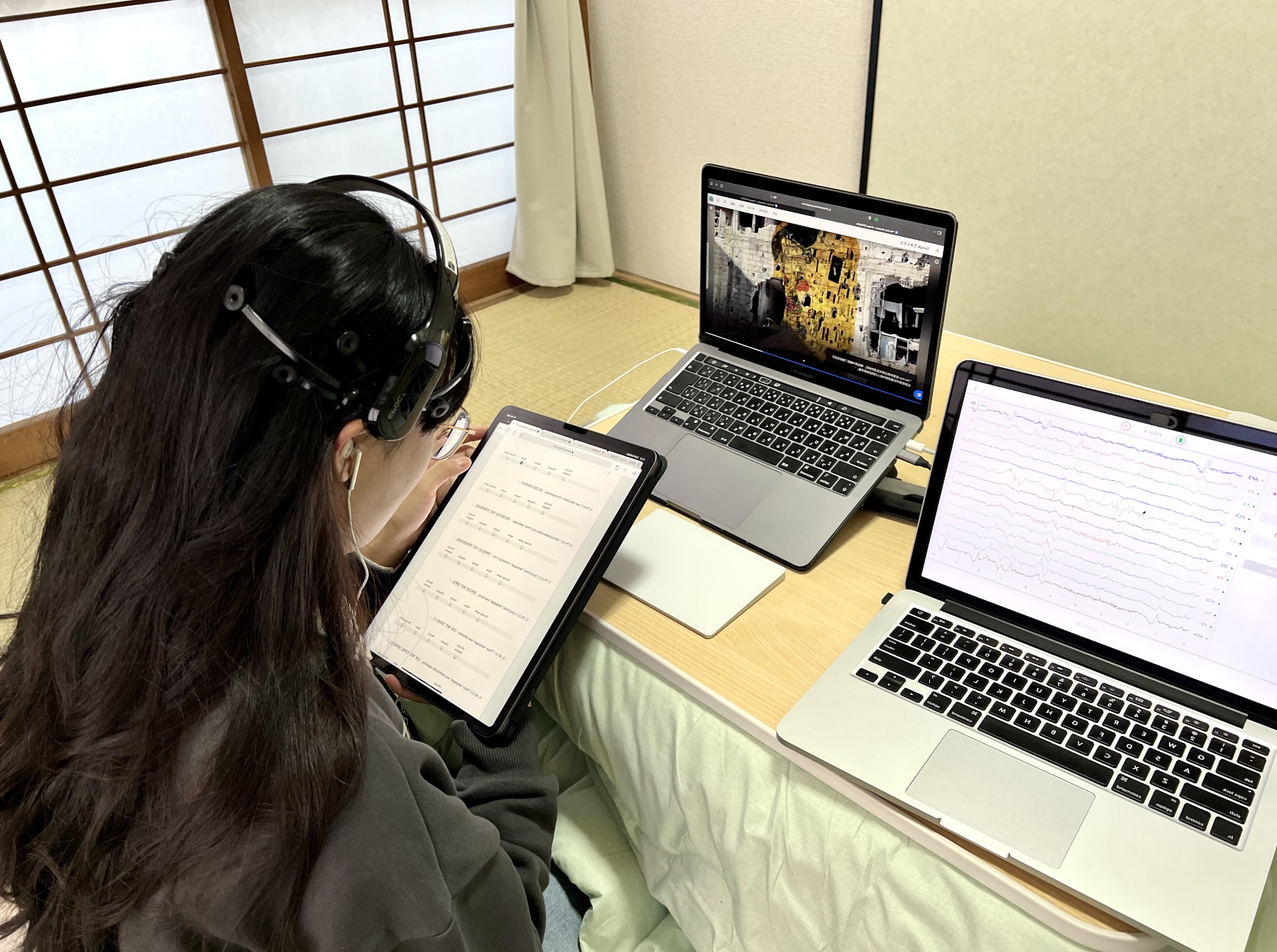
Electroencephalography and Self-Assessment Evaluation of Engagement with Online Exhibitions: Case Study of Google Arts & Culture
オンライン展示へのエンゲージメントの脳波と自己評価評価: Google Arts & Cultureのケーススタディ
The COVID-19 pandemic has and will continue to have an unprecedented impact on museums and exhibition galleries worldwide, with online visitors to museums and exhibitions increasing significantly. The most common method used by web user experience researchers to study user engagement is questionnaires, usually conducted after the user has completed the website experience and relying on the user’s memory and lingering feelings. Therefore, the purpose of this paper is to propose a new method of assessment based on a combination of user electroencephalography (EEG) signals and a self-assessment questionnaire (UES-SF). Since EEG signal measurement is a practical method to detect sequential changes in brain activity without significant time delays, it can comprehend visitors’ unconscious and sensory responses to online exhibitions. This paper employed the Google Arts & Culture (GA&C) website as an example to study 4 different exhibition formats and their impact on user engagement. The questionnaire results showed that the “game interaction” was significantly higher (p<0.05) in terms of participation than the “2D information Kiosks” and “3D virtual exhibitions” and was marginally significant (0.05<p<0.10) than “video explanation “. However, when we combined the EEG data, we could determine that “game interaction” had the highest user engagement, followed by “video explanation”, “3D virtual exhibition”, and the “2D information kiosk”. Therefore, our new evaluation approach can assist online exhibition user experience researchers in understanding the impact of different forms of interaction on engagement more comprehensively.
COVID-19の大流行は、世界中の博物館や展示館にかつてないほどの影響を与え、博物館や展示館へのオンライン訪問者は大幅に増加しています。ウェブユーザーエクスペリエンスの研究者がユーザーエンゲージメントを研究するために最もよく使われる方法はアンケートであり、通常、ユーザーがウェブサイト体験を完了した後に行われ、ユーザーの記憶や余韻に頼っているのが現状である。そこで本稿では、ユーザー脳波信号と自己評価アンケート(UES-SF)の組み合わせに基づく新たな評価方法を提案することを目的とする。EEG信号の測定は、脳活動の逐次変化を大きな時間的遅れなしに検出できる実用的な方法であるため、オンライン展示に対する来場者の無意識的・感覚的な反応を把握することができる。本論文では、Google Arts & Culture(GA&C)サイトを例として、4つの異なる展示形式とそれがユーザーエンゲージメントに与える影響について研究した。 アンケートの結果、「ゲームインタラクション」は「2D情報キオスク」や「3Dバーチャル展示」よりも参加度が有意に高く(p<0.05)、「ビデオ説明」よりも僅かに有意であった(0.05<p<0.10)。しかし、脳波データを組み合わせると、「ゲームとのインタラクション」が最もユーザー参加度が高く、次いで「ビデオ説明」、「3Dバーチャル展示」、「2D情報キオスク」の順であると判断することができました。したがって、我々の新しい評価手法は、オンライン展示のユーザー体験研究者が、さまざまな形態のインタラクションがエンゲージメントに与える影響をより包括的に理解するのに役立つと思われる。
1 Library and Information Media, University of Tsukuba, Tsukuba, Japan / 1 筑波大学図書館情報メディア系,日本,つくば
2 Zhejiang University, Hangzhou, Zhejiang, China / 2 浙江大学,中国,浙江省杭州市
Contact / 連絡先:li@digitalnature.slis.tsukuba.ac.jp



